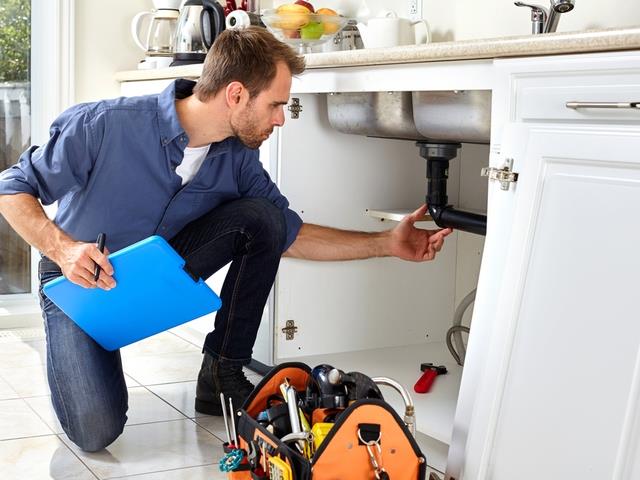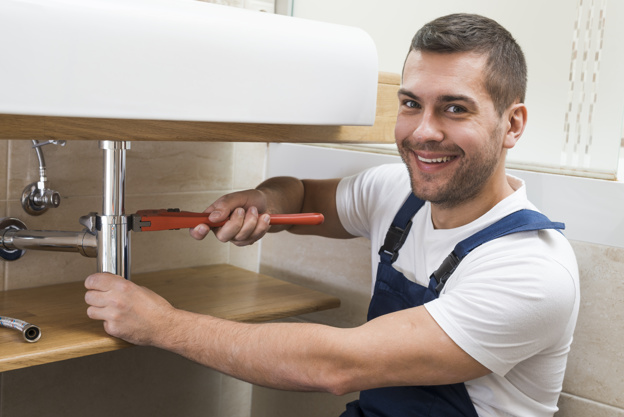Solving the Water Leaking Problem at Home: Top Tips & Tricks

Water leakage is one of the homeowners’ most common and frustrating problems!

Photos By: Stock Images
Unfortunately, it can be difficult to identify the source of a water leak, let alone fix it. The most common causes of water leakage are worn-out pipes, corroded fittings, and leaking fixtures. These types of leakage can be difficult to detect, but if you look closely, you may be able to spot the signs. Here are some tips and tricks to help you identify and fix water leaks in your home:
1. Call an Expert if Necessary
If the leakage is too serious for you to handle, it might be time to call in a professional. Plumbers at Oriole Basement Waterproofing company can help solve water leakage issues and often provide solutions that will help prevent similar problems in the future. Most importantly, they can help identify any underlying issues causing the leakage and advise on how to fix them.
So if you’re having trouble solving your water leakage problems at home, it might be time to call a professional and let them take care of it for you. Remember—early intervention is key in avoiding further damage and saving yourself money in the long run.
2. Check for Wet Spots
One of the most important steps to take when identifying a water leak in your home is to look for wet spots. This can be done by walking around and inspecting the walls, floors, and ceilings or using special moisture detectors. Any dampness or discoloration could indicate that there’s a hidden leak somewhere within the area.
Another way of checking for water spots is with a moisture meter. These devices measure the amount of moisture present in different areas of your house so you can easily detect whether there are any signs of leakage or not. Moisture meters come in analog and digital versions, but digital ones tend to be more accurate due to their ability to measure humidity levels.
When using one, you must read all instructions carefully before use so you get accurate readings every time, which can help pinpoint exactly where a potential leak might be coming from. Once identified, repairs can be made accordingly without wasting valuable time searching aim.

3. Listen for Running Water
One of the most effective ways to detect a water leak in your home is by listening to running water. This can be done using your ears or with special tools that help you detect faint noises, such as dripping taps and running toilets. Listening to running water is especially useful if you’ve identified wet spots but cannot locate the source of the leakage. It’s an easy and cost-effective way of finding exactly where a potential problem might be coming from so repairs can be made accordingly.
You can listen for running water in your home in several different ways, depending on how loud it is and its location within the house. For example, if it’s just a small drip from a tap or toilet cistern, standing close enough should enable you to hear it quite easily without any additional tools.
On the other hand, if there’s more significant leakage somewhere further away inside walls or ceilings, specialized equipment may need to be used to pick up these sounds accurately. One such tool is an acoustic stethoscope which works like a regular doctor’s stethoscope, except instead of amplifying the sound of your heartbeat, it amplifies any running water inside walls or ceilings.
4. Inspect Pipes and Fittings
It can help identify the source of a leak and reveal any potential problems that could lead to future leakage if left unchecked. Pipes and fittings should be inspected regularly for signs of corrosion or wear and tear, both common causes of water leakage.
When inspecting pipes and fittings, there are several things to look out for. First, check for any visible signs of damage, such as cracks or breaks in the pipe itself. If present, these should be repaired immediately as they can easily become larger over time, leading to more significant damage and an increased risk of leaking down the line.
Additionally, look for signs of corrosion on metal pipes or fixtures, which may indicate a problem with water pressure or pH levels within your plumbing system. Corrosion often appears as brownish-red discoloration around joints or along pipe lengths, so keep an eye out for this when inspecting your piping system.

5. Check Your Water Meter
Your water meter is a great tool for detecting leaks as it can often point out where the source of leakage might be. To check your water meter, take a reading before you go to bed and then another one after you’ve been gone for an extended period, such as overnight or during the day. If there is a significant difference between the two readings, this could indicate a water leak somewhere in your home.
In addition to taking regular readings, you should also look out for any sudden spikes or drops in usage, which may indicate an irregular leak. Irregular leaks can be difficult to pinpoint and require specialist equipment, such as acoustic stethoscopes, to locate the source.
6. Check for Damage Outside
It’s often easy to overlook the causes of water leakage outside your home, but these can lead to serious problems if not taken care of quickly. For example, checking for any signs of damage around pipes and fixtures exposed to the elements, such as outdoor taps, garden sprinklers, and even gutters, can help prevent future water leakage.
Other possible sources of outside water leaks can be cracks or holes in exterior walls, foundations, and driveways—especially in older homes. If any noticeable damage is spotted, then repairs should be made as soon as possible to minimize the risk of future leakage.
Inspecting the roof is also important when solving water leakage problems at home. Even small cracks in roof tiles or shingles can lead to significant amounts of water entering a home over time, so it’s important to check for any signs of damage and fix them before more serious issues arise.
These are just some tips for solving water leakage problems at home. Remember that prevention is better than cure, so conduct regular inspections of your piping system and have any signs of damage or wear-and-tear repaired as soon as possible. And lastly, feel free to call in the professionals if the problem still needs to be solved. Doing so will likely save you time and money in the long run.





